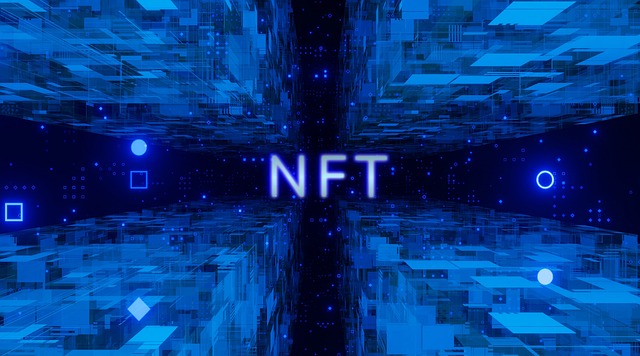Is NFT still alive in 2024?

Introduction
NFTs, short for non-fungible tokens, took the world by storm in 2021 as interest exploded in these unique digital assets. NFTs allow digital files like artwork, music, videos, and more to be tokenized on a blockchain, creating verifiable proof of ownership and scarcity. The NFT market grew to over $40 billion in 2021, with high-profile sales like Beeple’s $69 million digital art piece bringing NFTs into mainstream consciousness.
However, the landscape has shifted in 2022 and 2023 as crypto markets declined. Some have wondered whether the NFT fad is fading. As we look ahead to 2024, analyzing market trends and developments can give insight into the future of NFTs.
Briefly looking back, NFTs emerged around 2017 and saw some early interest, but 2021 marked the breakthrough year. In addition to big sales, brands and celebrities entered the space, and NFT collections like Bored Ape Yacht Club and CryptoPunks gained followers.
In 2022, NFT sales have continued but leveled off from the 2021 highs. However, use cases have expanded across gaming, sports, social media, music, film, and more. Although speculative trading was dominant in 2021, real utility and communities are building in 2022.
Looking at 2024, most experts believe NFTs will remain relevant and experience further mainstream adoption. However, the market will mature, with less hype and more focus on meaningful projects.
Leveraging Digital Expertise and Crypto Insights: A Dual-Pronged Approach to NFT Brand Development
Developing a brand in the burgeoning NFT (Non-Fungible Token) space requires a harmonious blend of innovative crypto-centric ideas and robust digital marketing strategies. In this venture, partnering with platforms like ScaleFinal and TradeCrypto can prove to be significantly beneficial. ScaleFinal, with its expertise in content creation, SEO, and Conversion Rate Optimization (CRO), stands as a reliable digital marketing agency to elevate the brand’s online presence and engagement levels. Their tailored strategies aim at understanding and catering to the customers’ needs at every step of their journey, thereby enhancing the brand’s conversion rates. On the other hand, TradeCrypto, with its mission to provide relevant and trusted crypto media worldwide, can serve as a well of crypto-related ideas and a platform for community engagement.
As the NFT brand evolves, staying updated with the latest trends and news in the crypto space is imperative. TradeCrypto, being a media/news company, offers up-to-date news in the blockchain and crypto industry, thereby providing insights that can be pivotal for the brand’s growth and adaptation to market dynamics. Additionally, their platform also provides guides on promoting ICOs (Initial Coin Offerings), which, though not directly related to NFTs, demonstrates a level of expertise in blockchain marketing strategies that could be leveraged for NFT brand development. Meanwhile, continuous digital marketing efforts through ScaleFinal can ensure that the brand maintains a strong, appealing online presence, attracting and retaining a growing base of interested audiences. By amalgamating the crypto-centric insights from TradeCrypto with the digital marketing prowess of ScaleFinal, developing a compelling and successful NFT brand can be a more structured and informed endeavour.
The Future Uses and Markets for NFTs
Expanding Digital Ownership
One of the core functions of NFTs is providing digital ownership of unique goods. This will continue expanding in 2024 and beyond. While NFT art grabbed headlines, all digital content can become NFTs, from tweets to videos. Brands are also exploring NFTs for digital products and virtual experiences. Physical product warranties and ownership may also be tokenized. Essentially, anything that can be collected and owned digitally could be stored on the blockchain as an NFT. The market for digitally scarce goods will grow as creation tools improve.
Gaming
Gaming utilizes NFTs for in-game asset ownership and play-to-earn models. Sales of assets like virtual land and in-game items totaled over $5 billion in 2021. Major gaming studios are now launching “AAA” blockchain games with integrated NFT economies. The play-to-earn model is especially huge in the developing world, allowing players to earn from gaming skill. This trend will continue to gain adoption. The blockchain gaming market is predicted to grow at a CAGR of 43% to reach $13 billion by 2028.
Metaverse Interoperability
A key promise of NFTs is interoperability across virtual worlds and the metaverse. Currently, in-game assets are locked. NFTs allow assets like avatars to become cross-platform. This will foster metaverse connectivity. Brands are also exploring NFT utilities that interact across virtual worlds. For example, adidas has an NFT that opens a virtual sneaker factory across different metaverses.
Music
Music NFTs include tokenized songs, albums, merchandise, tickets, and more. Artists like The Weeknd have launched NFTs. Music streaming could shift toward a model where fans own NFT songs rather than renting them via subscriptions. Music NFT platforms like Royal and Opulous are launching to support artists. The music NFT market is projected to grow to $4.5 billion in 2024.
Sports
NFTs provide digital memorabilia and engage sports fans. Platforms like NBA Top Shot have seen huge success selling NFT highlight videos. Sports teams and leagues are partnering to launch licensed collectibles and game tickets. As media consumption shifts online, sports NFTs offer a new revenue stream while deepening fan loyalty. The sports NFT market is forecast to grow over 110% annually.
Brand Loyalty Programs
Brands can use NFTs to engage consumers and build loyalty. For example, Coca Cola launched branded wearables for avatars in Decentraland. NFTs provide scarcity and status for brand fans. Disney, Nike, McDonald’s, and more traditional brands are launching NFT projects. The format allows creative campaigns and virtual experiences that appeal to web-native consumers.
Philanthropy
The transparency of NFTs enables charity fundraising and social causes. Campaigns like UkraineDAO have quickly raised millions in aid through NFT drops. The impact can be reliably tracked on the blockchain. Smart contracts can deliver funds directly to causes and cut out middlemen. In 2024 and beyond, the charitable potential of NFTs should continue to expand.
The NFT Market in 2024: Growth Projections
Current market data shows $16.7 billion in NFT trading volume in Q1-Q3 2022, compared to $23 billion in Q1-Q3 2021. The market cooled from its red-hot 2021 state but is still substantial.
As per our expertise, most analysts predict significant NFT market growth continuing through 2024:
- Coinbase valued the current market at over $100 billion and expects it to grow to $1 trillion by 2030.
- JPMorgan forecasts the metaverse could be an $800 billion market with NFTs and virtual experiences contributing significantly.
-Grayscale Investments stated the metaverse could become a $1 trillion market with NFT ownership as a core component.
A table comparing NFT market size predictions (in billions USD):
| Year | Conservative Estimate | Moderate Estimate | Optimistic Estimate |
| 2024 | $50 | $100 | $150 |
| 2025 | $100 | $250 | $400 |
| 2026 | $150 | $350 | $600 |
Driving growth factors:
- Mainstream adoption across entertainment, social media, gaming, etc.
- Expansion of the metaverse and virtual worlds where NFTs are core to digital ownership.
- Improved NFT infrastructure and user experience.
- Global internet adoption provides more NFT users, especially internationally.
Variables that could impact forecasts:
- Overall crypto/blockchain adoption rates.
- Regulations – increased legal clarity would help industry growth.
- Technical scaling challenges if NFT usage outpaces development.
- Security issues around NFT scams and thefts could dampen adoption if not addressed.
Criticisms and Challenges Facing NFTs
Despite potential, some criticisms persist around NFTs:
Environmental Impact
- NFTs have large carbon footprints due to blockchain energy use. Moving to more efficient networks like Solana or utilising carbon offsets can help address this.
Legal Gray Areas
- Copyright, IP, licensing issues exist around NFT ownership claims for underlying works. Solutions may include smart contracts paying royalties to creators.
Scalping and Fraud
- As a new technology, scams and risky speculation are unfortunately common. Better consumer education is still needed.
Bubble Concerns
- Highly speculative sale prices have raised bubble fears. But as utility expands, NFT price discovery should stabilise. Unique assets will likely retain value.
Interoperability
- Cross-chain and cross-platform NFT use still requires technical improvement for seamless interoperability.
Storage Reliability
- NFT durability depends on long-term blockchain network maintenance. For permanent digital preservation, storage redundancy is necessary.
Consumer Adoption Barriers
- NFTs remain little understood by the public. Onboarding and user experience lag behind interest, limiting mainstream comfort levels.
To become integral digital assets rather than just hype, NFTs need to address these concerns through technological and market improvements.
Case Studies: Key NFT Projects to Watch
Bored Ape Yacht Club
This generative art NFT collection is the poster child for NFTs as culture, status and community. The apes have become celebrity favorites, graced magazine covers and launched countless spin-offs. Sales volume exceeds $2 billion. The full roadmap is still unfolding – mutant apes were airdropped to holders, and the Otherside metaverse land sale generated $320 million. This flagship brand will drive future trends.
Sorare
This fantasy soccer NFT game has raised over $680 million and boasts partnerships with 180 football clubs and leagues. Users can collect player NFT cards and build teams to compete and earn prizes. Sorare illustrates how NFT gaming can attract mainstream fans and provide real utility. Its success points to strong potential for sports NFT experiences.
Yuga Labs
This group oversees flagship NFT brands like Bored Ape Yacht Club, CryptoPunks and recently purchased IP like Wizard of Oz. With funding from top VCs, Yuga is developing an NFT-focused metaverse game called Otherside. They aim to build a cohesive NFT ecosystem that sets best practices. With top talent and funding, Yuga’s efforts are important for driving future standards.
VeeFriends
Created by famous YouTuber Gary Vaynerchuk, this NFT project features animal-themed tokens representing virtues and community. It illustrates how influencer creators can leverage engaged audiences for successful NFT launches. VeeFriends set the bar for community-focused NFT brands. The collaborative approach is impactful in building an NFT ecosystem beyond speculation.
NFTs vs Other Web3 Technologies
NFTs are often mentioned alongside the broader web3, metaverse and blockchain gaming trends. But what exactly differentiates NFTs?
Cryptocurrencies
Cryptos like Bitcoin and Ethereum fuel transactions on their blockchains. But cryptocurrencies are fungible – interchangeable. NFTs represent unique digital assets and are non-fungible.
Metaverse
This refers to shared, persistent virtual worlds like Decentraland. NFTs enable digital asset ownership and use across metaverses. The metaverse infrastructure is not limited to NFTs. But NFTs will likely be core to metaverse interoperability and economies.
DAO
Decentralized autonomous organizations allow coordinated action via rules encoded on the blockchain. DAO governance often utilizes NFT membership but they are separate concepts. Not all DAOs are based around NFTs.
Blockchain Gaming
Blockchain games integrate concepts like digital asset ownership through NFTs. But blockchain technology has other gaming use cases beyond NFTs, like processing transactions. NFTs specifically concern unique digital assets.
So while related, NFTs have a distinct utility compared to other web3 building blocks.
The Outlook for NFTs in 2024
NFTs face growing pains but show promise in empowering digital content creators, unlocking new business models and reimagining intellectual property.
Based on our analysis, we believe that in 2024:
- NFTs will play a key role in the growth of the metaverse through digital asset ownership and use.
- Major brands across entertainment, sports, gaming and more will launch NFT projects as the model proves effective for fan engagement and marketing.
- Music NFTs will start shifting music distribution and consumption toward a more creator-centric model.
- Gaming NFTs and play-to-earn mechanisms will see massive growth, especially serving emerging markets.
- New protocols will emerge around royalties, licensing and IP management for NFT-backed creative works.
- Happier legal and regulatory clarity will support safer mainstream NFT adoption.
- The NFT market cap will likely double from 2022, approaching $150 billion or more based on optimistic estimates.
In summary, NFTs appear here to stay as a new paradigm for digital property and ownership. There is still much to be defined regarding best practices and potential. But it is unlikely NFTs will die out completely given the strong momentum and utility demonstrated so far across industries. Innovative creators will keep pushing the technology forward. Rather than fading, expect NFTs to play an integral role expanding social, economic, and creative transactions in digital worlds.
By drawing on our expertise we have found that while uncertainties remain, the long-term importance of NFTs as a digital ownership structure points to continued adoption and integration in 2024 and beyond.
Frequently Asked Questions
Q: Are NFT sales dropping compared to 2021 peaks?
A: Yes, the parabolic growth in 2021 was unsustainable. But NFT sales are still substantial in 2022 with billions in trading. As the market matures, more stable long-term value will develop.
Q: Is the NFT market going to crash?
A: There may be price corrections, especially for more speculative assets. But as real utility emerges, NFTs with fundamental value will likely retain strength. Unique digital assets won’t disappear entirely.
Q: Is NFT just a fad?
A: NFTs are still in the early adoption phase. Like any new technology, they face hype cycles. But given their digital ownership capabilities, NFTs solve real problems and will likely see lasting use.
Q: Why do NFTs have value?
A: At a basic level, people are willing to pay for provably scarce digital content. But the greater value comes from unlocking new digital engagement models between creators, brands and consumers.
Q: Are NFTs bad for the environment?
A: The energy use of proof-of-work blockchains is indeed problematic. But solutions like carbon-neutral blockchains or offset programs can address these concerns.
Q: What will NFTs be used for in the future?
A: NFT potential expands art and collectibles into wider fields like identity, music, gaming, physical asset ownership, ticketing, and anywhere that creating digital scarcity is valuable.
Q: How big will the NFT market be in 2025?
A: Estimates range from $100 billion to $400 billion. Mainstream adoption across gaming, social media and entertainment will drive growth.
Q: Should I buy NFTs?
A: Do thorough research before purchasing. Consider NFTs with real utility and community benefit rather than only speculative value. But used properly, NFTs can offer exciting new digital experiences.






